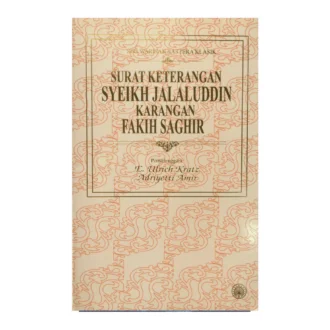Malay Magic: Being an Introduction to the Folklore and Popular Religion of the Malay Peninsula describes in detail the popular beliefs of the Malays with regards to animals and nature and their relations with the supernatural, including charms, superstitions and magic rites. It also covers social customs and ceremonies relating to births, marriages and funerals. Numerous illustrations and photographs are also included.
Briefly, the purpose of the author has been to collect into a Book of Malay Folklore all that seemed to him most typical of the subject amongst a considerable mass of materials, some of which lay scattered in the pages of various other works, others in unpublished native manuscripts, and much in notes made by him personally of what he had observed during several years spent in the Malay Peninsula, principally in the State of Selangor. The book does not profess to be an exhaustive or complete treatise, but rather, as its title indicates, an introduction to the study of Folklore, Popular Religion, and Magic as understood among the Malays of the Peninsula.
It must be added that the author, having to leave England about the beginning of the year 1899 with the Cambridge scientific expedition which is now exploring the Northern States of the Peninsula, left this work, Malay Magic with C. O. Blagden for revision. The first five Chapters and Chapter VI., up to the end of the section on Dances, Sports, and Games, were then already in the printer’s hands, but only the first 100 pages or so had had the benefit of the author’s revision. For the arrangement of the rest of Chapter VI., and for some small portion of the matter therein contained, Blagden responsible, and it has also been his duty to revise the whole book finally. Accordingly, it is only fair to the author to point out that he is to be credited with the matter and the general scheme of the work, while the responsibility for defects in detail must fall upon Blagden.
As regards the spelling of Malay words, it must be said that geographical names have been spelt in the way which is now usually adopted and without diacritical marks: the names of the principal Native States of the Peninsula (most of which are repeatedly mentioned in the book) are Kĕdah, Perak, Sĕlangor, Jŏhor, Păhang, Trĕngganu, Kĕlantan, and Pătani. Otherwise, except in quotations (where the spelling of the original is preserved), an attempt has been made to transliterate the Malay words found in the body of the book in such a way as to give the ordinary reader a fairly correct idea of their pronunciation. The Appendix, which appeals only to persons who already know Malay, has been somewhat differently treated, diacritical marks being inserted only in cases where there was a possible ambiguity, and the spelling of the original MSS. being changed as little as possible.
A perfect transliteration, or one that will suit everybody, is, however, an unattainable ideal, and the most that can be done in that direction is necessarily a compromise. In the system adopted in the body of the work, the vowels are to be sounded (roughly speaking) as in Italian, except ĕ (which resembles the French e in que, le, and the like), and the consonants as in English (but ng as in singer, not finger; g as in go; ny as ni in onion; ch as in church; final k and initial h almost inaudible). The symbol ʿ represents the Arabic ‘ain, and the symbol ’ is used (1) between consonants, to indicate the presence of an almost inaudible vowel, the shortest form of ĕ, and elsewhere (2) for the hamzah, and (3) for the apostrophe, i.e. to denote the suppression of a letter or syllable. Both the ‘ain and the hamzah may be neglected in pronunciation, as indeed they are very generally disregarded by the Malays themselves.
In this and other respects, Arabic scholars into whose hands Malay Magic may fall must not be surprised to find that Arabic words and phrases suffer some corruptions in a Malay context. These have not, as a rule, been interfered with or corrected, although it has not been thought worthwhile to preserve obvious blunders of spelling in well-known Arabic formulæ. It should be added that in Malay the accent or stress, which is less marked than in English, falls almost invariably on the penultimate syllable of the word. Exceptions to this rule hardly ever occur except in the few cases where the penultimate is an open syllable with a short vowel, as indicated by the sign ˘.
The illustrations are reproduced from photographs of models and original objects made by Malays; most of these models and other objects are now in the Cambridge Archæological and Ethnological Museum, to which they were presented by the author.
The Index, for the compilation of which Blagden am indebted to his wife, who has also given the editor much assistance in the revision of the proof-sheets, will, it is believed, add greatly to the usefulness of the work as a book of reference.











Reviews
There are no reviews yet